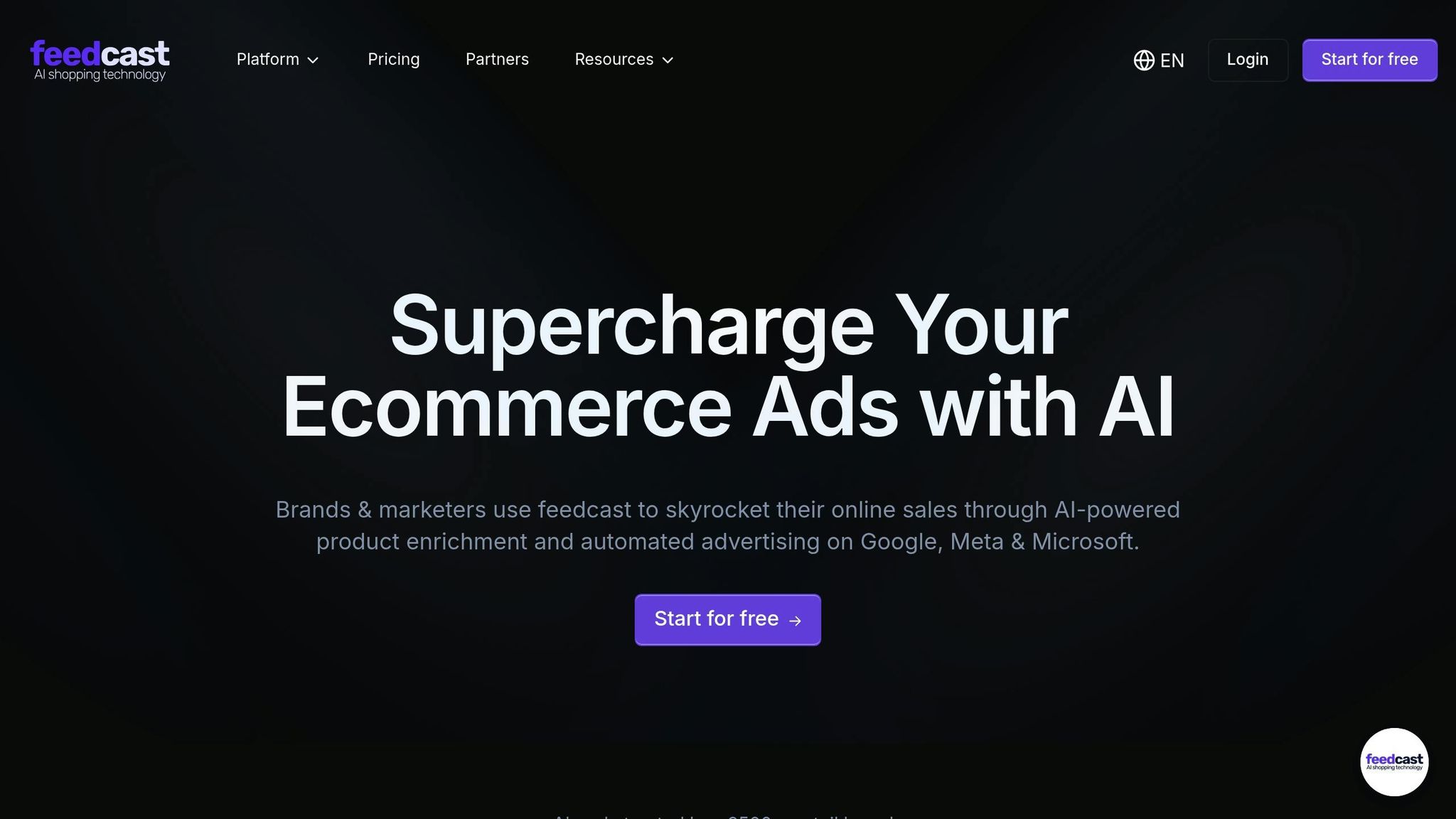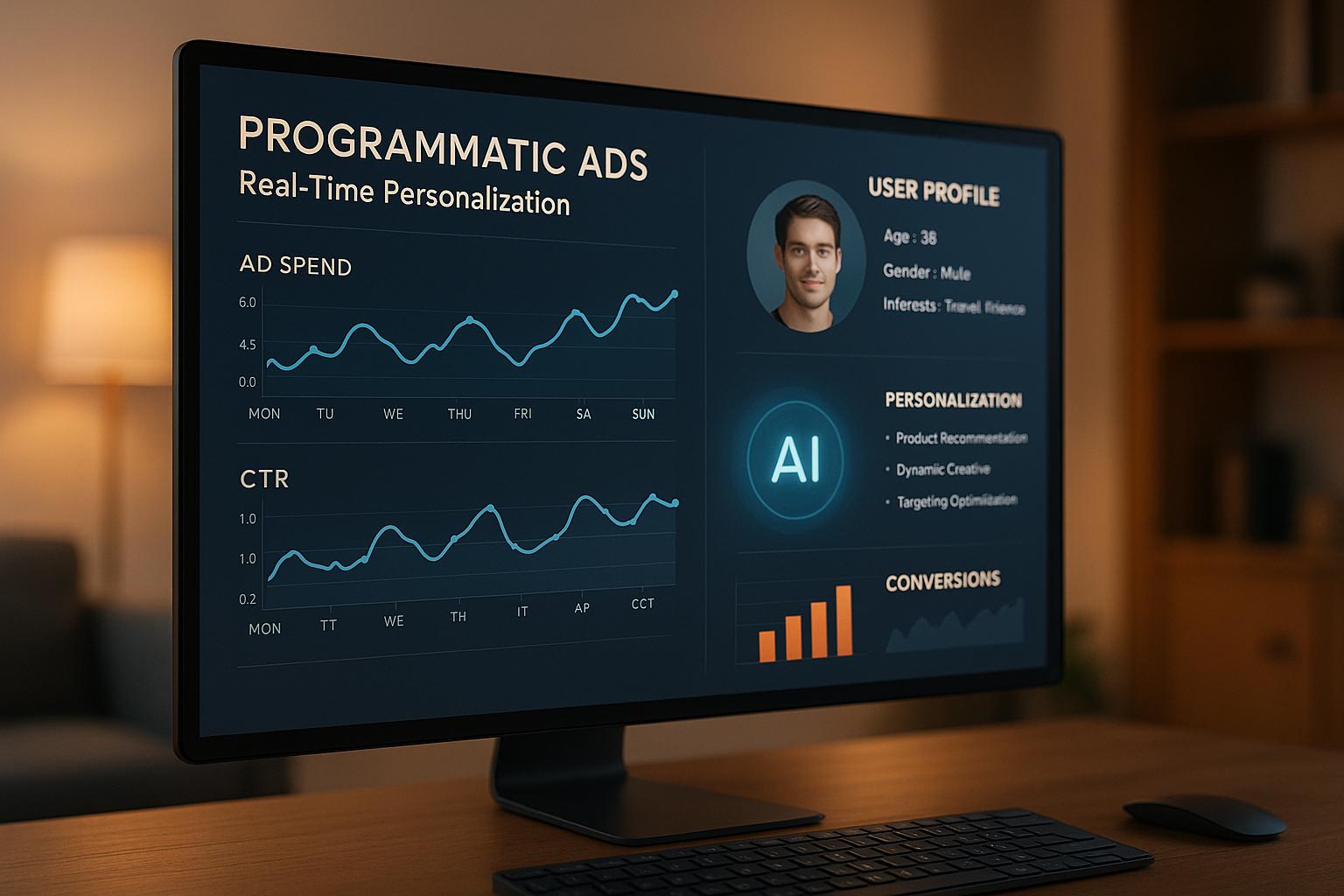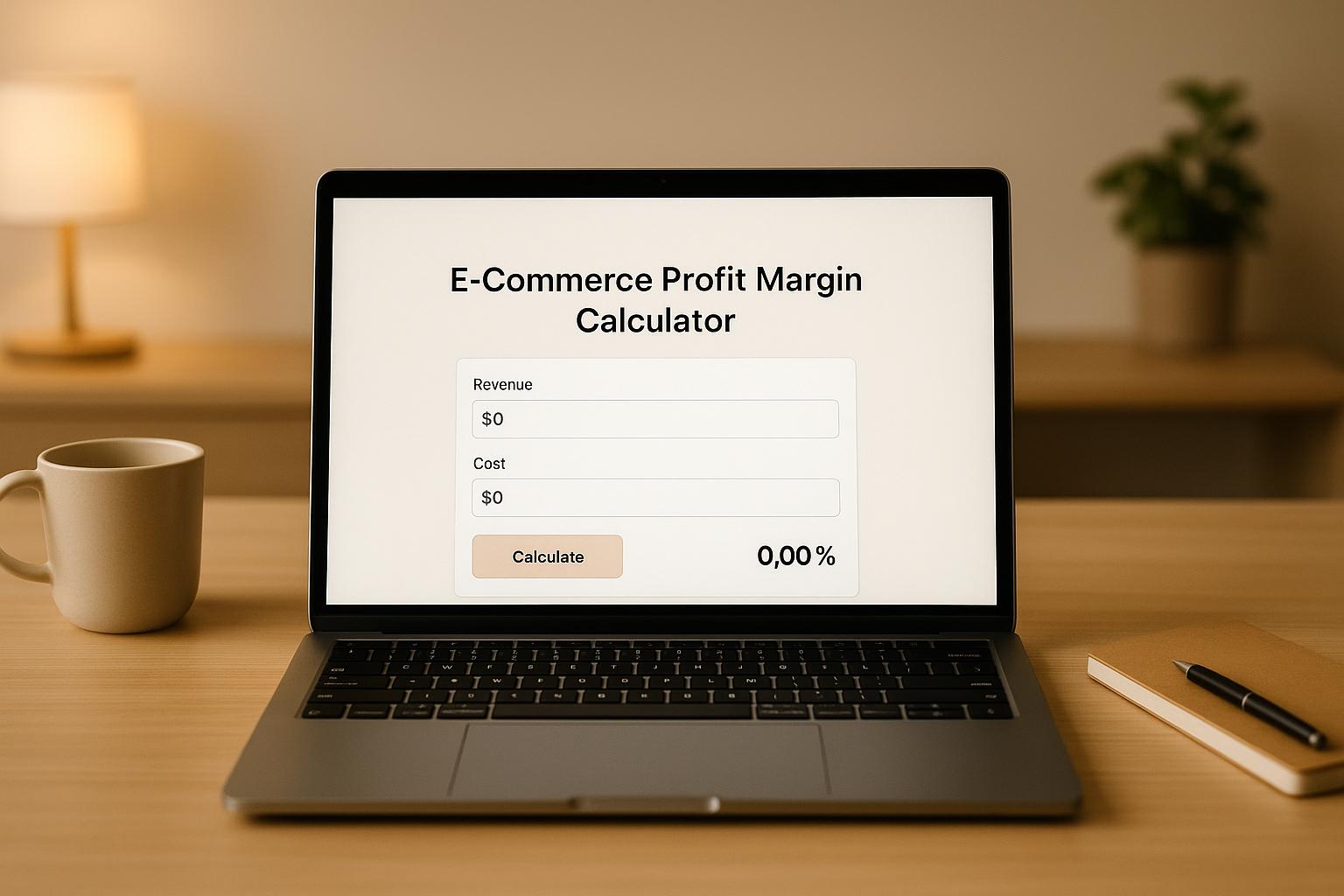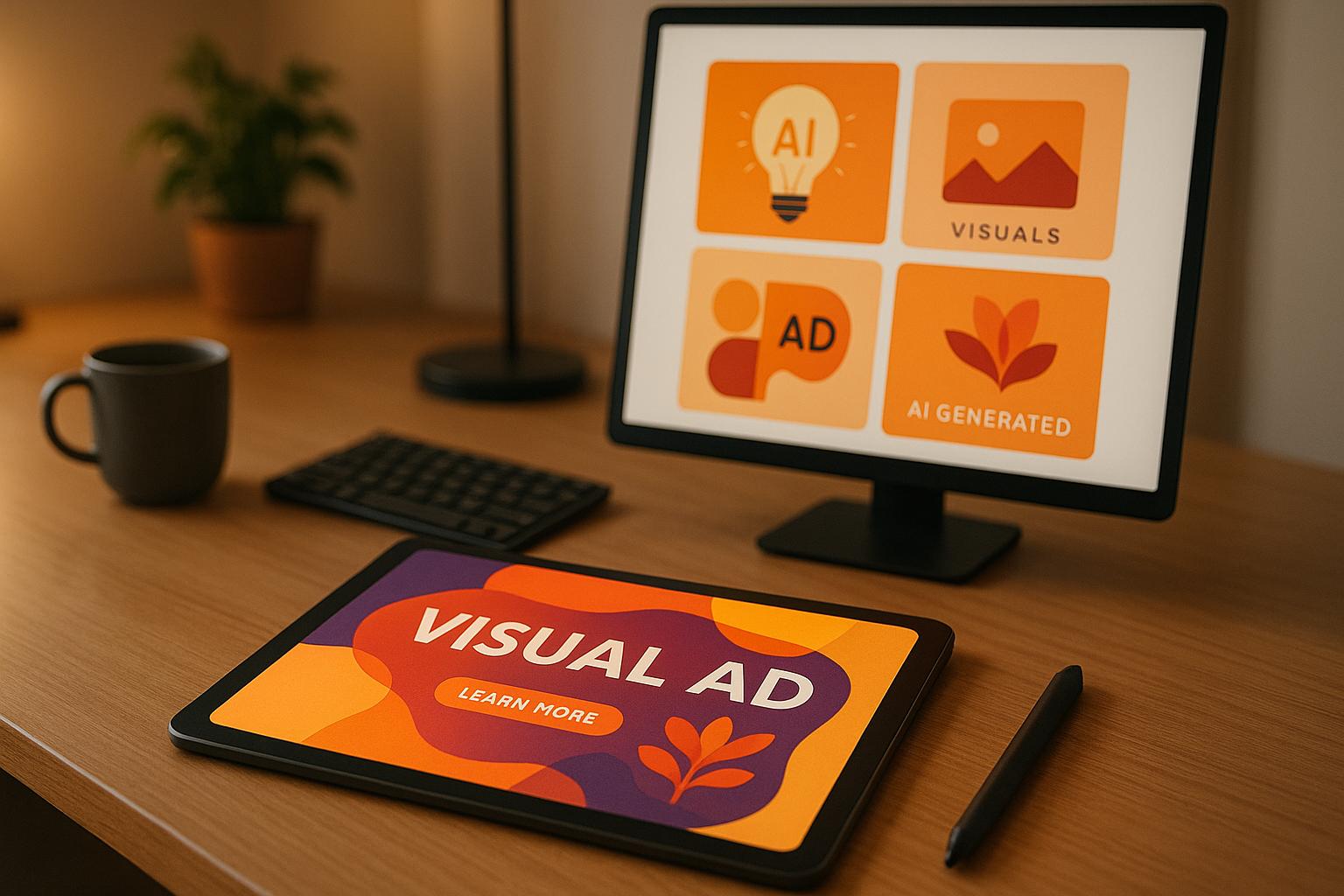AI-Driven Budget Allocation: How It Boosts ROI
AI-driven budget allocation is transforming how businesses manage advertising spend. By leveraging machine learning and real-time data, AI tools dynamically adjust budgets to optimize performance across multiple channels. This approach eliminates wasteful spending, improves ROI, and provides actionable insights into campaign performance.
Key Takeaways:
- Smarter Budgeting: AI reallocates funds to high-performing campaigns while cutting back on underperforming ones.
- Real-Time Adjustments: Budgets are adjusted instantly based on live performance, market trends, and competitor activity.
- Cross-Channel Optimization: AI ensures campaigns across platforms like Google and Meta work together for better results.
- Improved Attribution: AI identifies the true value of each touchpoint, ensuring better resource allocation.
By using tools like Feedcast, businesses can simplify ad management, optimize product feeds, and gain detailed insights to make informed decisions. The result? Better returns on ad spend without the manual hassle.
Why Predictive AI Must Show ROI Math Before Marketing Leaders Trust Its Budget Recommendations
How AI-Driven Budget Allocation Works
AI has reshaped how budgets are allocated in advertising, making the process smarter and more efficient. By combining cutting-edge technology and data-driven insights, AI doesn’t just automate budget management - it transforms it. Let’s break down the three key systems that power this change.
Machine Learning and Predictive Analytics
Machine learning dives deep into historical data, uncovering patterns that might otherwise go unnoticed. It sifts through countless variables - like time of day, device type, location, seasonal trends, and user behavior - to predict which campaigns, keywords, or audiences are likely to deliver results.
For example, if mobile users in California tend to engage with a campaign on Tuesday mornings, the AI learns this and allocates more budget to similar scenarios in the future. On the flip side, it also spots underperforming trends, such as campaigns that consistently miss the mark with certain demographics or during specific hours, and adjusts spending to avoid wasting resources.
As new data flows in, these algorithms refine their predictions, becoming sharper and more accurate over time. This constant learning feeds directly into the real-time adjustments we’ll explore next.
Real-Time Data and Dynamic Adjustments
AI keeps a close eye on campaign performance around the clock, making quick, data-driven tweaks throughout the day. If a campaign suddenly starts performing well, AI can immediately redirect funds from underperforming campaigns to take advantage of the momentum.
This flexibility ensures budgets are never locked into ineffective strategies. For example, if the cost-per-acquisition begins to rise, the system can scale back spending before too much money is lost.
But it doesn’t stop at basic performance metrics. AI also factors in external influences like competitor actions, inventory levels, and market shifts. Imagine a competitor running out of stock on a popular item - AI can step in, boost the budget for similar products, and capture the extra demand.
Another standout feature is how AI handles cross-channel interactions. If it notices that users exposed to display ads are more likely to convert through search campaigns, it adjusts budgets across both channels to amplify the combined impact, rather than treating each channel as an isolated entity.
Attribution Modeling for Performance Insights
Traditional attribution models often oversimplify things by giving all the credit to either the first or last interaction in a customer’s journey. AI-powered attribution, however, digs deeper to understand how each touchpoint contributes to a conversion.
For instance, AI might reveal that while display ads don’t directly lead to conversions, they play a crucial role in boosting the performance of subsequent search campaigns. Armed with this knowledge, marketers can allocate budgets more effectively, ensuring supporting campaigns get the attention they deserve - even if their impact isn’t immediately obvious.
These models are also highly adaptable. As customer behaviors evolve and journeys become more complex, AI adjusts its understanding of how channels work together. This ongoing refinement ensures that budget decisions stay aligned with the reality of how customers engage with brands.
The insights gained from attribution modeling feed back into the overall budget strategy. By understanding the true value of each interaction, AI can allocate funds to optimize the entire customer journey, rather than focusing narrowly on individual campaigns. This broader perspective often uncovers ways to boost ROI by investing in channels that might otherwise be overlooked when viewed in isolation.
ROI Improvements Through AI Budget Allocation
AI-powered budget allocation is transforming how e-commerce businesses manage their advertising spend. Studies reveal that using AI for budget management can yield measurable improvements compared to traditional approaches. These advancements can reshape advertising strategies, delivering better results while optimizing resources. Let’s dive into the metrics and examples that highlight these gains.
Measured Metrics and Performance Gains
Across various industries, AI-driven budget allocation has shown the ability to improve key performance indicators. Many businesses report noticeable increases in return on investment shortly after adopting AI-based systems. One of the biggest advantages? Cost efficiency. AI tools can pinpoint underperforming campaigns and reallocate funds to those that deliver stronger results.
But it doesn’t stop there. Conversion rates often improve as AI ensures spending is optimized across the entire customer journey rather than isolated touchpoints. This creates a ripple effect, amplifying overall campaign effectiveness. Marketing teams, too, see a boost: they save time by eliminating manual budget adjustments, freeing them to focus on strategic planning and creative work. These measurable gains make it easier to see the impact of AI through before-and-after analysis.
Before-and-After Comparisons
Case studies consistently show that campaigns managed with AI outperform those relying on traditional methods. AI’s ability to identify where conversions truly happen provides marketers with sharper insights, leading to smarter budgeting decisions. Over time, these systems learn and refine their algorithms, sustaining growth even during unpredictable market shifts, like seasonal sales spikes.
AI adapts in real time, ensuring campaigns remain effective regardless of market changes. This flexibility, combined with data-driven precision, marks a significant leap forward for e-commerce advertisers looking to maximize their ROI. By shifting to AI-managed budgets, businesses can unlock smarter, more efficient advertising strategies that deliver tangible results.
Key Features of AI Budget Allocation Tools
When selecting an AI-driven budget allocation tool, e-commerce businesses should prioritize features that directly enhance advertising performance. These tools can transform scattered campaigns into cohesive, revenue-generating strategies.
Multi-Channel Management
Managing campaigns across multiple platforms can get messy without the right tools. That’s where multi-channel management steps in. The best AI budget allocation tools offer a centralized dashboard, allowing you to oversee performance, tweak spending, and track results across all your advertising channels from one place.
These tools don’t just consolidate data - they actively optimize it. AI reallocates budgets automatically, shifting funds from underperforming channels to those delivering stronger results. This kind of real-time adjustment ensures your advertising dollars are always working as hard as possible.
Centralizing data also unlocks deeper insights. When all your advertising channels feed into a single system, AI can detect patterns and opportunities that might otherwise go unnoticed. This unified approach minimizes budget waste and ensures your money is directed toward the campaigns that drive results.
AI-Powered Optimization and Automation
Automation is what sets basic tools apart from smarter systems. Advanced AI solutions offer real-time smart bidding, which constantly adapts to changing market conditions. These tools analyze performance data and make instant adjustments to maximize your ROI.
Another standout feature is predictive budget allocation. This allows AI to anticipate which campaigns will perform best during specific times and shift budgets accordingly - before those peak performance windows even begin. It’s like having a crystal ball for your ad spend, ensuring your top-performing campaigns get the funding they need when it matters most.
AI also refines audience targeting. By analyzing which customer segments respond best to particular campaigns, the system automatically adjusts targeting parameters and reallocates budgets to focus on high-value audiences. This eliminates guesswork and reduces the time spent manually tweaking campaigns.
On top of that, dynamic creative optimization ensures your best-performing ad variations receive more exposure. When AI identifies winning creative elements, it increases funding for campaigns using those assets while cutting back on underperforming ones.
Analytics and Reporting
Data is only useful if it leads to actionable insights, and that’s where robust analytics come in. Real-time tracking lets you see how budget changes impact results almost immediately, helping you make faster, smarter adjustments.
Advanced attribution models take it a step further by analyzing how each touchpoint contributes to conversions. These tools allocate budgets based on the true value of each campaign, avoiding over-investment in last-click efforts while ensuring awareness and consideration campaigns get the funding they deserve.
Predictive analytics add another layer of value by forecasting future trends. Whether it’s seasonal shifts, market changes, or competitive pressures, these tools help you prepare and plan your spending strategies in advance.
Customizable reporting is another must-have feature. From cost per acquisition to lifetime value and return on ad spend, the best tools let you track the metrics that matter most to your business. Automated reports save time and keep stakeholders informed about campaign performance without extra effort.
Finally, performance segmentation provides a granular breakdown of results. Whether it’s by product category, customer segment, or geographic region, this feature helps pinpoint which areas of your business benefit most from increased ad spend. With this level of detail, you can make more strategic decisions about where to allocate your budget for maximum impact.
sbb-itb-0bd1697
Feedcast: AI-Driven Budget Allocation for E-commerce

Feedcast takes the concept of AI-driven budget allocation and applies it seamlessly to the e-commerce world. By combining product data management with advertising optimization, Feedcast.ai simplifies the process of allocating ad budgets intelligently across multiple channels.
The platform tackles a common headache for e-commerce businesses: juggling complex ad campaigns while ensuring budgets are spent where they yield the best results. With its AI-powered system, Feedcast dynamically adjusts spending based on real-time performance, ensuring your ad dollars are directed toward the campaigns and channels delivering the highest returns.
Multi-Channel Advertising Management
Managing ads across platforms like Google, Meta, and Microsoft Ads can be overwhelming, but Feedcast simplifies this by integrating them into one easy-to-use dashboard. No more switching between platforms - Feedcast’s AI evaluates performance across all connected channels and redistributes budgets to maximize your ROI.
The platform’s smart allocation system identifies which channels work best for specific products or customer groups. For example, if Google Shopping consistently outperforms Facebook for a particular product, the AI shifts budget in real time to amplify results.
Another standout feature is its cross-channel insights. Feedcast’s AI uncovers patterns that may go unnoticed when managing platforms separately. For instance, it might find that Facebook excels at acquiring new customers, while Google is better for retargeting. The system then adjusts budgets to optimize the entire customer journey, creating a more cohesive and effective advertising strategy.
Product Feed Optimization
Feedcast doesn’t stop at budget allocation - it also improves your product data to boost ad performance. The AI enhances product titles and descriptions, making ads more compelling and reducing conversion costs. When your product feeds are rich and well-optimized, campaigns perform better across all channels. This, in turn, allows the AI to allocate budgets more effectively, driving higher returns.
The platform supports imports from popular e-commerce systems like Shopify, WooCommerce, and PrestaShop, as well as formats like Google Sheets, CSV, and XML. It even detects and resolves feed errors that could hurt campaign performance, ensuring your budget isn’t wasted on poorly optimized listings.
As a certified Google CSS partner, Feedcast also offers potential cost savings for Google Shopping campaigns. These savings can free up budget for experimenting with new campaigns or scaling up successful ones, giving you more flexibility in your advertising strategy.
Real-Time Campaign Optimization
Feedcast’s predictive analytics give you a head start on emerging trends. When the AI spots early signs of a campaign or product category gaining traction, it reallocates budgets proactively to make the most of the opportunity.
The platform also fine-tunes targeting to enhance efficiency. By identifying which customer segments respond best to specific campaigns, Feedcast adjusts both targeting and budget allocation. High-value audiences get more focus, while less responsive groups receive fewer resources.
Transparency is another key feature. Feedcast provides detailed analytics and reports that show exactly how budgets are distributed, which campaigns are prioritized, and how these decisions impact your ROI. Customizable reporting options let you focus on the metrics that matter most, whether it’s cost per acquisition or return on ad spend.
Best Practices for AI-Driven Budget Allocation
Using AI for budget allocation can transform how you manage advertising spend, but it requires a thoughtful approach. By focusing on high-quality data and leveraging real-time insights, you can maximize the impact of your campaigns.
Focus on Data Quality
AI's performance depends heavily on the quality of the data it processes. If your data is incomplete or messy, your budget decisions will likely suffer. Start by cleaning your database - remove duplicates, correct errors, and fill in missing information.
Fragmented data can be a major roadblock. When customer details, product data, and campaign performance metrics are stored in different systems, AI tools can't make well-rounded decisions. Creating a unified data repository, like a centralized data lake, ensures the AI has a complete view of your operations [1].
Seamless integration is also key. Make sure your AI tools connect smoothly with your CRM, analytics platforms, and advertising channels through APIs. Without this connectivity, data gaps can undermine the AI's ability to optimize budgets effectively [1].
To maintain data quality over time, implement regular data hygiene practices. Validate customer information, update product catalogs, and track data quality metrics consistently. With clean and reliable data, AI can make smarter, more accurate adjustments in real time [1].
Use Real-Time Insights for Continuous Improvement
Once your data is in good shape, real-time analytics become a powerful tool for refining your budget allocation. Focus on key performance metrics such as CTR, conversion rate, ROI, ROAS, CPC, and CPA to evaluate how well your campaigns are performing [2][3].
Real-time monitoring also helps you stay ahead of changes in customer behavior, seasonal trends, or new market opportunities. For example, if data shows growing interest in a specific product category, AI can quickly redirect budget to capitalize on the trend [2].
Insights from cross-channel data reveal which platforms are driving results. Maybe Facebook excels at bringing in new customers, while Google Shopping is better at encouraging repeat purchases. AI can use this information to fine-tune bidding strategies instantly, ensuring your budget goes where it will have the most impact [2][3].
Conclusion: The Future of AI-Driven Advertising
AI-driven budget allocation is changing the game for advertisers, turning what used to be a guessing game into a precise, data-backed process that drives real results.
The benefits are hard to ignore: smarter spending that boosts ROI, simplified workflows that remove the hassle of manual adjustments, and the ability to react instantly to shifts in the market. By analyzing massive amounts of performance data across multiple channels, AI uncovers opportunities for optimization that might otherwise go unnoticed.
What sets AI-powered budget allocation apart is its ability to continuously learn and adapt. Unlike traditional methods that rely on outdated assumptions, AI adjusts spending in real time, factoring in current metrics, seasonal trends, and new customer behaviors. This ensures advertising dollars are always directed toward the campaigns delivering the best results.
Another major advantage is how AI tackles the challenge of managing budgets across multiple platforms. Instead of handling separate budgets for Google Ads, Facebook, Instagram, and other channels, AI provides a unified view that optimizes spending across the board. This cross-platform approach not only simplifies management but also reveals insights about customer journeys that single-platform strategies simply can't offer. By integrating dynamic adjustments and cross-channel strategies, AI sets the foundation for more cohesive and effective advertising.
For businesses looking to adopt AI-driven budget allocation, the first step is ensuring clean, well-organized data. From there, gradually expanding AI's role while maintaining strategic human oversight is key. This balance of automation and human input creates a seamless advertising ecosystem, aligning with the multi-channel and real-time strategies discussed earlier.
As AI continues to evolve, its capabilities in budget allocation will only grow more advanced. The businesses that succeed will be those that combine AI's analytical precision with the strategic creativity needed to thrive in e-commerce advertising. The insights and strategies explored in this article highlight how AI is shaping the future, offering a clear path forward for those ready to embrace its potential.
FAQs
How does AI-driven budget allocation help improve ROI for e-commerce advertisers?
AI-powered budget allocation takes your ad spend to the next level by leveraging real-time data and machine learning to make smarter, faster decisions. Unlike traditional methods, this approach continuously analyzes performance metrics and adjusts budgets on the fly, ensuring your money flows toward the campaigns delivering the best results.
The benefits are clear: better targeting, more conversions, and less wasted spend. In fact, research shows that businesses using AI-driven strategies can see a 20–30% boost in campaign ROI. For e-commerce brands aiming to grow, this could be a game-changer.
What features should an AI budget allocation tool have to improve ROI for e-commerce businesses?
An AI-powered budget allocation tool for e-commerce should offer predictive analytics to anticipate how campaigns will perform and fine-tune ad spending in real-time. This ensures businesses are always a step ahead in optimizing their advertising efforts.
Another must-have feature is automated bid management, which adjusts bids on the fly to achieve the best possible ROI - no manual tweaking required. Tools that can spot audience overlap are equally important, as they help avoid campaigns competing against each other and improve targeting efficiency.
Lastly, the ability to dynamically reallocate budgets based on live performance data is crucial for keeping advertising costs under control while maximizing results. Together, these capabilities empower e-commerce businesses to improve their ROAS and simplify their ad strategies.
How does AI optimize budget allocation across platforms like Google and Meta?
AI takes the guesswork out of budget allocation by analyzing real-time data to ensure funds are directed toward the most effective campaigns or channels. It reviews performance metrics, audience engagement, and campaign objectives to make sure every advertising dollar works harder, delivering the best possible return on investment (ROI).
Platforms like Google and Meta use AI to automatically adjust bids, shift budgets, and refine targeting strategies. This not only reduces wasted spending but also boosts efficiency, allowing businesses to get better results without the need for constant manual adjustments.
Yohann B.




